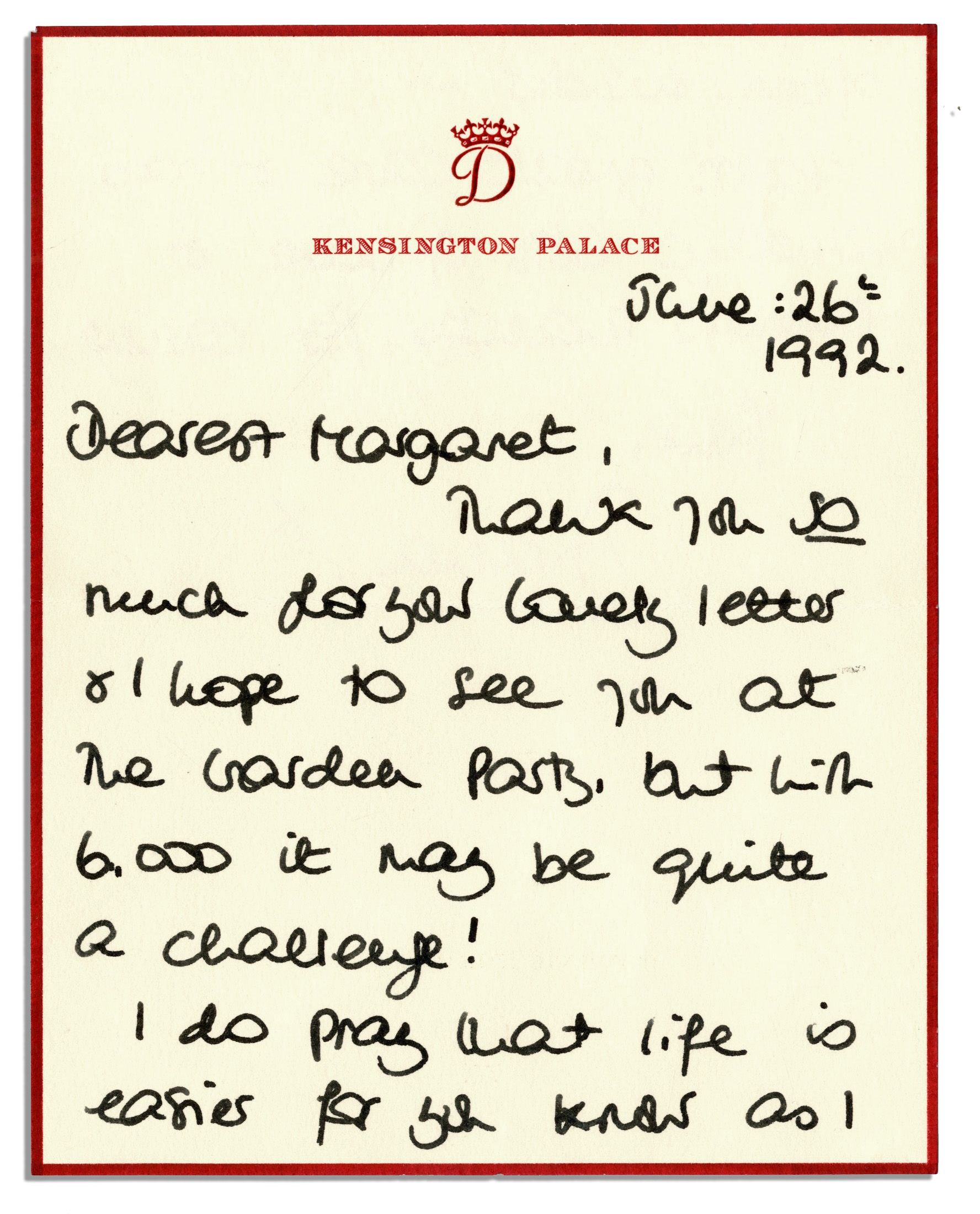Diana’s Lost Letter to Princess Anne: A Voice From the Grave

In early 2024, inside a dusty estate box in Essex, England, a fragment of royal history was uncovered — and it has shaken both palace corridors and public memory. What lay inside was not a jewel, a crown, or a tiara, but a sealed envelope. Cream-colored stationery, scarlet wax pressed with Diana’s personal crest, and handwriting so unmistakable it needed no introduction: Princess Diana’s.
For 26 years, this letter remained hidden, passed quietly from hand to hand, unopened, unread. But when its existence finally came to light, one detail stunned royal watchers: the recipient was Princess Anne.
Two Princesses, Two Worlds
To understand the shock, one must remember how different these women were. Diana, warm and emotive, was embraced as “the People’s Princess.” She hugged children in hospitals, shook hands with AIDS patients, and risked her life walking through minefields. Every gesture spoke of compassion.
Anne, by contrast, embodied duty and discipline. Known for her no-nonsense approach, she carried out hundreds of engagements a year with minimal fuss and even less emotion. If Diana was light, Anne was iron. The distance between them was visible at family gatherings: Diana dazzling cameras, Anne cool and restrained, a quiet pillar of tradition.
For years, whispers of frostiness circulated. Anne was not chosen as godmother to either of Diana’s sons, and at christenings and weddings, the two rarely interacted. They were, in short, two women bound by crown but separated by temperament.
So why, in the final months of her life, would Diana write to Anne?
Hidden in Plain Sight
After Diana’s tragic death in Paris in 1997, many of her personal notes surfaced. Thank-you letters, diary fragments, messages of encouragement. But this envelope charted its own mysterious path. Entrusted first to a senior palace staffer, then sold quietly to a private collector, it eventually found its way into the home of a retired banker named Thomas Henderson.
For more than two decades, it sat untouched in a wooden drawer, unspoiled by media frenzy. When Henderson’s estate was catalogued in 2024, an assistant paused over the faded paper and crimson seal. Experts authenticated it within days. The stationery matched Diana’s personal supply, the ink her signature blue-black, the wax seal one she reserved only for her most intimate communications.
Historians hesitated before opening it. To break that seal felt almost sacrilegious. Yet curiosity — and history — demanded it.
A Mother’s Prophecy
The letter was not hysterical, not sensational. It was calm, reflective, and hauntingly clear-eyed. Written just weeks before her fatal Paris trip, it spoke of an institution at the brink of change. Diana sensed the monarchy could no longer survive on silence and tradition alone. Reverence was giving way to scrutiny, and scrutiny, she feared, to intrusion.
But the crown was not her main concern. Her boys were.
She wrote of William and Harry with maternal urgency. She worried about their emotional well-being in a world that valued formality over feeling. She feared they would be asked to hide themselves behind duty, to silence their voices for the sake of image. And she could not bear it.
And so, in a twist few could have predicted, she turned to Anne.
Why Anne?
Diana and Anne were never close. Yet Diana respected Anne’s steadiness, her ability to withstand the glare of public life without collapse. In Anne’s stoicism, she saw not coldness, but reliability.
Her request was simple but extraordinary: if she could not be there, Anne must quietly watch over William and Harry. Not as their mother, not even as their friend, but as a steady force — someone who knew the burden of the crown and could guide them with loyalty and strength.
It was not a plea. It was a plan. Diana wasn’t asking for warmth; she was asking for resilience.
The Prophecy Fulfilled
Looking at the princes today, Diana’s foresight feels uncanny. William, the heir, has blended tradition with modern compassion, championing mental health, homelessness, and openness — the very causes his mother fought for. Harry, though he broke from the family, did so in pursuit of authenticity and emotional well-being, values Diana cherished.
Two very different paths, but both rooted in freedom — the freedom to be themselves. Exactly what Diana had hoped for.
Anne’s Quiet Shift
Anne has never publicly spoken about the letter. Yet royal watchers note a subtle evolution in her stance since Diana’s death. Once the most traditional of Windsors, Anne has quietly supported a streamlined monarchy and, at times, defended the younger generation’s desire for independence. It is not dramatic, but it is telling.
Perhaps the letter planted a seed. Perhaps Anne, so long cast as Diana’s opposite, became — in her own way — the ally Diana foresaw.
A Legacy in Ink
Today, the letter rests in the British Library’s Royal Archives, displayed in a limited exhibit titled
Voices Unheard: Diana’s Legacy in Letters.Visitors come not for spectacle, but for intimacy. For the chance to read Diana’s own words, unfiltered by tabloids or palace press officers.
What lingers most is not fear, but love. Love for her children, love for the truth, and love for a future where royals might be human first and regal second.
Diana’s letter is more than a relic. It is a reminder that even in silence, she saw what others refused to see. That sometimes, the truest legacy is not in jewels or titles, but in words carefully written, sealed in red wax, and left to echo long after the writer is gone.
